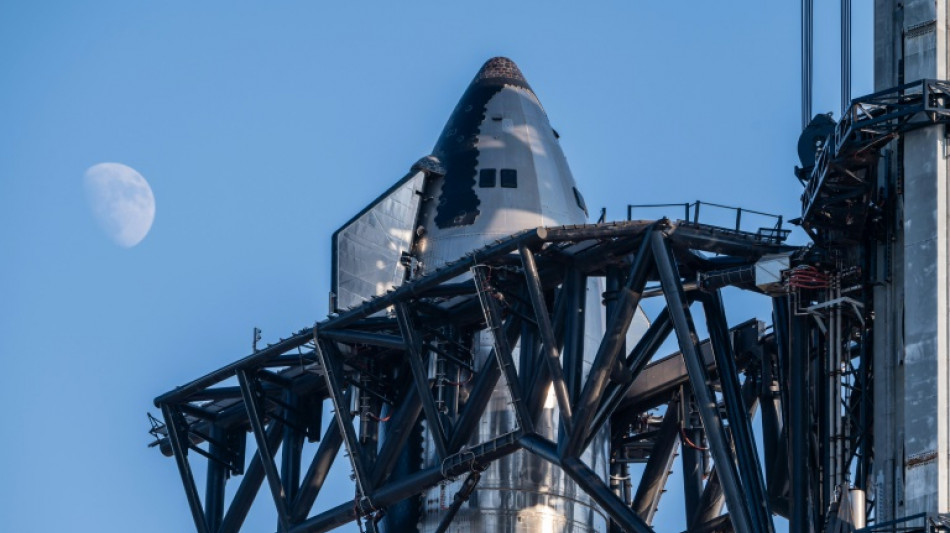
BCC
-1.0700


SpaceX's next test flight of its Starship megarocket this Sunday could mark a world first: catching the returning first-stage booster using the launch tower's "chopstick" arms -- a crucial step in the company's quest for rapid reusability.
The launch window opens at 7:00 am (1200 GMT) from the company's Starbase in Boca Chica, Texas. A live webcast will be carried on SpaceX's website and its X account.
During its last flight in June, SpaceX achieved its first successful splashdown in the Indian Ocean with the upper stage of Starship, a prototype spaceship that the company's founder Elon Musk hopes will one day carry humanity to Mars.
NASA is also keenly awaiting a modified version of Starship to act as a lander vehicle for crewed flights to the Moon under the Artemis program later this decade.
The primary objectives for Sunday's test, Starship's fifth, will be attempting "the first ever return to launch site and catch of the Super Heavy booster, and another Starship reentry and landing burn, aiming for an on-target splashdown of Starship in the Indian Ocean," SpaceX said in a statement.
The company added that its engineers have "spent years preparing and months testing for the booster catch attempt, with technicians pouring tens of thousands of hours into building the infrastructure to maximize our chances for success."
Teams will be monitoring to ensure "thousands" of criteria are met both on the vehicle and at the tower before any attempt to return the Super Heavy booster to the tower and "catch" it.
If these conditions aren't satisfied, the booster will be redirected for a splashdown in the Gulf of Mexico, as in previous tests.
But if things do go to plan, the returning booster will decelerate from supersonic speeds, generating audible sonic booms around the landing site, and the powerful "chopstick arms" will embrace it as it descends about seven minutes after launch.
- 'Fail fast, learn fast' -
The large mechanical arms, called "chopsticks" and even "Mechazilla" by Musk, have generated considerable excitement among space enthusiasts.
Starship stands 397 feet (121 meters) tall with both stages combined -- about 90 feet taller than the Statue of Liberty.
Its Super Heavy booster, which is 233 feet tall, produces 16.7 million pounds (74.3 Meganewtons) of thrust, about twice as powerful as the Saturn V rockets used during the Apollo missions.
SpaceX's "fail fast, learn fast" strategy of rapid iterative testing, even when its rockets blow up spectacularly, has ultimately accelerated development and contributed to the company's success.
Founded only in 2002, it quickly leapfrogged aerospace industry giants and is now the world leader in orbital launches, besides providing the only US spaceship currently certified to carry astronauts.
It has also created the world's biggest internet satellite constellation -- invaluable in disaster and war zones.
But its founding vision of making humanity a multiplanetary species is increasingly at risk of being overshadowed by Musk's embrace of Republican presidential candidate Donald Trump and his alignment with right-wing politics.
In recent weeks, the company has openly sparred with the Federal Aviation Administration (FAA) over launch licensing and alleged violations, with Musk accusing the agency of overreach and calling for its chief, Michael Whitaker, to resign.
"He's trying to position himself for minimal regulatory interference with SpaceX once Donald Trump becomes president," said Mark Hass, a marketing expert and professor at Arizona State University. "But it's a calculated gamble if things go the other way."
Y.Kimura--JT